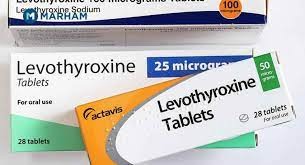Evidence has demonstrated that we can do a great deaI to prevent and minimalize the occurence of CTE (Concussion Tramatic Encephalophy), damage due to repetitive head injuries. Which of the answers below are true:
You do not need to lose consciousness to suffer a concussion,
You will suffer permanent brain damage
We encourage fluids after a concussion
Bleeding always occurs with a concussion
The Correct Answer is A
A. You do not need to lose consciousness to suffer a concussion.
This statement is true. Concussion is a type of traumatic brain injury (TBI) that can occur without loss of consciousness. Many concussions happen without the person losing consciousness at all.
B. You will suffer permanent brain damage.
This statement is not necessarily true. While some concussions can lead to lasting effects, not all cases result in permanent brain damage. The severity and long-term effects of a concussion can vary widely.
C. We encourage fluids after a concussion.
This statement is true. Adequate hydration is important after a concussion. Staying hydrated can help support the brain's recovery process.
D. Bleeding always occurs with a concussion.
This statement is not true. Concussion is defined by the disruption of normal brain function due to a blow or jolt to the head or body, and bleeding is not always a necessary component of a concussion. However, more severe head injuries could involve bleeding and would not be classified as just a concussion.
Nursing Test Bank
Naxlex Comprehensive Predictor Exams
Related Questions
Correct Answer is A
Explanation
A. Levothyroxine
Correct Answer: Levothyroxine should be administered before breakfast.
Explanation: Levothyroxine is a synthetic thyroid hormone used to treat hypothyroidism. It needs to be taken on an empty stomach, at least 30 minutes before eating, to ensure proper absorption. Food can interfere with its absorption, especially foods containing calcium, iron, and fiber.
B. Digoxin
Incorrect Explanation: Digoxin does not need to be administered before breakfast.
Explanation: Digoxin is a medication used to treat heart conditions like congestive heart failure and atrial fibrillation. It doesn't have specific instructions regarding administration in relation to meals. It's important to administer digoxin consistently at the same time every day, but it doesn't need to be taken specifically before or after breakfast.
C. Divalproex
Incorrect Explanation: Divalproex does not need to be administered before breakfast.
Explanation: Divalproex is used to treat conditions like epilepsy and bipolar disorder. It can be taken with or without food. While taking it with food might reduce the likelihood of stomach upset, there's no requirement to take it specifically before breakfast.
D. Mycostatin Mouthwash
Incorrect Explanation: Mycostatin mouthwash is not related to breakfast timing.
Explanation: Mycostatin is an antifungal medication used to treat fungal infections in the mouth (oral thrush). Its administration is not linked to meal times. It's typically swished around in the mouth and then swallowed or spit out, depending on the specific instructions provided by the healthcare provider.

Correct Answer is B
Explanation
A. Maintain a saline-lock:
Maintaining a saline lock is important for potential intravenous access, but it is not the most urgent priority compared to actions that directly monitor the child's condition and help manage the disease.
B. Check the child's daily weight:
Monitoring daily weight is crucial in acute glomerulonephritis, as it helps assess fluid balance and detect early signs of fluid retention or worsening kidney function, which are key concerns in this condition. This makes it a priority action.
C. Place the child on a no-salt-added diet:
While dietary modifications can be important for managing various health conditions, including kidney issues, this is not the top priority in this situation. Reducing salt intake can help manage fluid retention, but it is not the nurse's priority action at this moment.
D. Educate the parents about potential complications:
Patient education is crucial, especially in chronic conditions, but in this acute care scenario, the nurse's immediate priority is to address the child's needs. Educating parents about potential complications should be done, but it's not the most immediate action.
Whether you are a student looking to ace your exams or a practicing nurse seeking to enhance your expertise , our nursing education contents will empower you with the confidence and competence to make a difference in the lives of patients and become a respected leader in the healthcare field.
Visit Naxlex, invest in your future and unlock endless possibilities with our unparalleled nursing education contents today
Report Wrong Answer on the Current Question
Do you disagree with the answer? If yes, what is your expected answer? Explain.
Kindly be descriptive with the issue you are facing.
